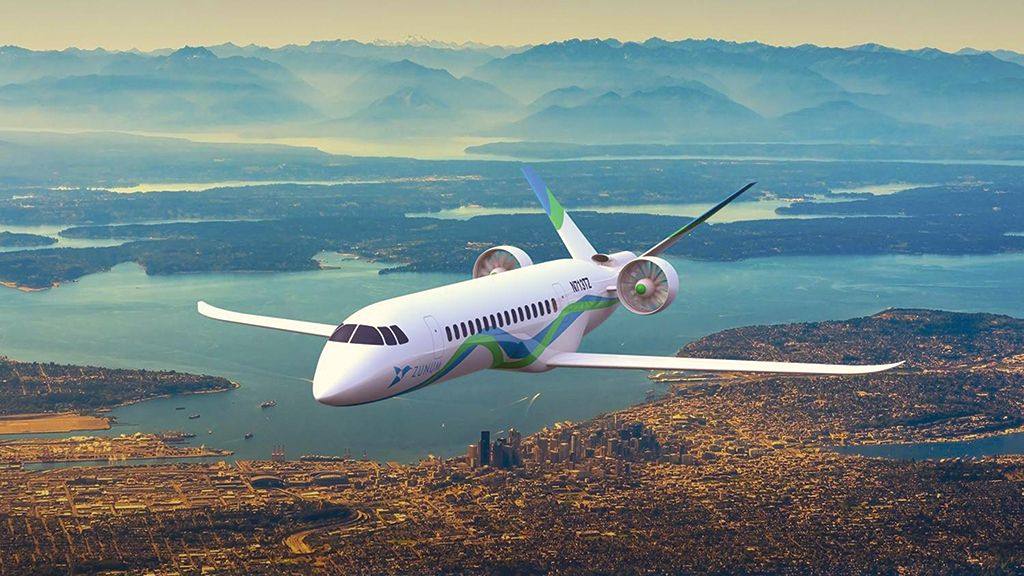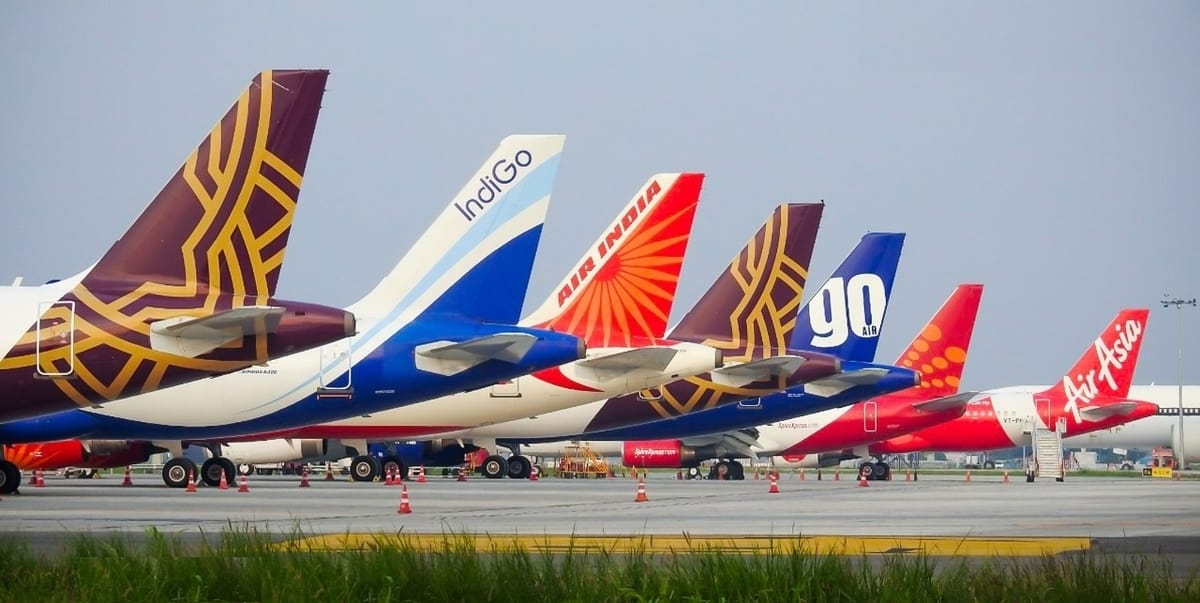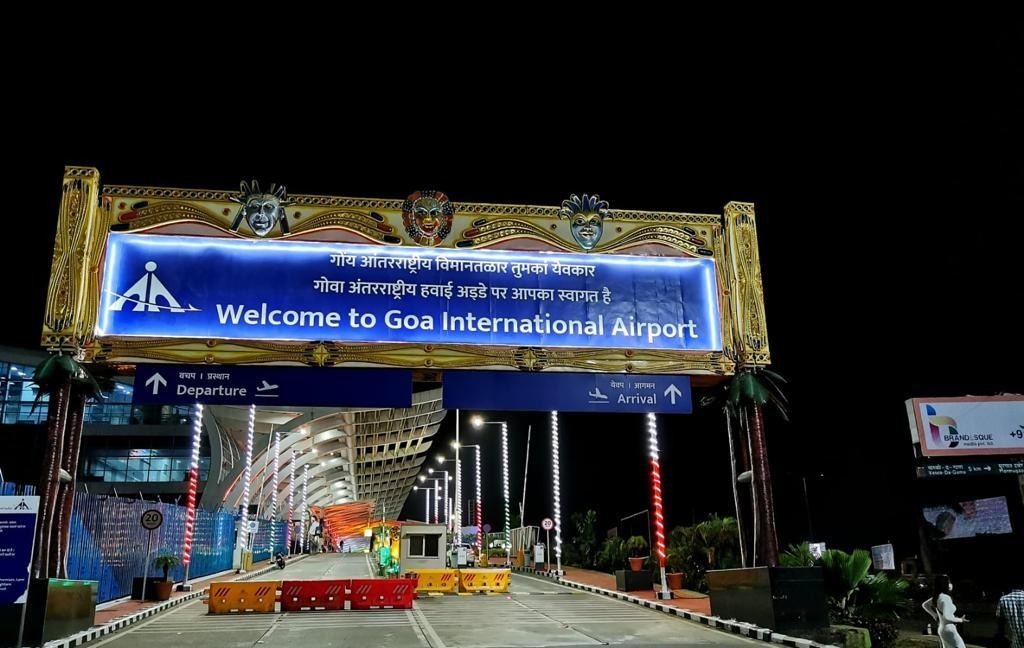Researchers believe that a new class of highly effective battery developed by NASA might be utilized to power fully electric aircraft.
Representative | The Times
Following research into solid-state batteries, which carry more energy and are lighter than industry-standard lithium-ion batteries, the US space agency made the accomplishment. Their initiative, which is a component of NASA's commitment to environmentally friendly aviation, aims to advance battery technology by examining the use of solid-state batteries in aviation applications such advanced air mobility and electric-propelled aircraft.
Solid-state batteries don't contain liquids like industry-standard lithium-ion batteries do, which can lead to negative circumstances like overheating, fires, and charge loss over time — problems that anyone who uses large electronics may be familiar with.
The Issue
Because of their low energy density, SOA lithium-ion batteries cannot be used to power electric aircraft designsAerospace applications need to be safe, and SOA lithium-ion batteries have resulted in a number of safety incidents on aircraftThe undesirable parasitic weight caused by excessive packaging and cooling
Solid-state batteries, which may store more energy and function better under pressure than conventional lithium-ion batteries, do not encounter these hazardous situations.
What is new?
A vital component in the creation of more environmentally sustainable electric aircraft is battery performance. A crucial necessity in aviation is that these batteries must effectively store the enormous amount of energy needed to power an aircraft while being lightweight.
The battery must also rapidly release its energy in order to power an electric aircraft.
Researchers from NASA's Solid-state Architecture Batteries for Enhanced Rechargeability and Safety (SABERS) unit were able to use novel new materials that have not yet been applied to batteries to boost the battery's discharge rate by a factor of 10.
A solid-state battery is being created by the SABERS effort for use in aviation applications. The SABERS team's newly developed cathode for its solid-state battery is being evaluated by NASA researchers John Connell and Yi Lin (sitting) using a cyclic voltameter | NASA
The SABERS team realized that solid-state architecture enabled them to modify the design and packaging of their battery to reduce weight and enhance the amount of energy it can store.
As opposed to liquid batteries, which require each battery cell to be housed inside of a separate steel casing, SABERS's battery allows all of the cells to be stacked vertically inside of a single casing. SABERS has proved solid-state batteries can power items at a tremendous capacity of 500 watt-hours per kilogram — double that of an electric car — in part because to this innovative design.
The interior of a cell from SABERS' solid-state battery, which is mostly constructed of sulfur and selenium, is shown in this figure. These cells can be stacked on top of one another without the need for encasings like lithium-ion batteries can | NASA
We’re starting to approach this new frontier of battery research that could do so much more than lithium-ion batteries can... Not only does this design eliminate 30 to 40 per cent of the battery’s weight, it also allows us to double or even triple the energy it can store, far exceeding the capabilities of lithium-ion batteries that are considered to be state of the art. The possibilities are pretty incrediblesaid Rocco Viggiano, principal investigator for SABERS at Nasa’s Glenn Research Center in Cleveland
Researchers at SABERS found that their battery can run at temperatures nearly twice as high as those of lithium-ion batteries without the use of as much cooling gear.
Government, commercial, and academic institutions have already expressed interest in the novel battery, and SABERS researchers are working with a number of organizations to further the technology.
The ultimate goal is to use it to launch a new era of environmentally friendly aircraft that does away with jet noise and carbon emissions.
Through its experimental X-57 aircraft, dubbed Maxwell, which replaces fuel-powered propellers with an all-electric propulsion system, NASA has already made notable advancements in this field.
https://www.youtube.com/watch?v=No9Rq3VE0FI
Representative
SOURCE(s) : NASA | ntrs.nasa.gov
COVER (representative): ABC
Read next
Commenting on the monthly aviation industry’s monthly domestic passenger data for the month of September 2022, the aviation rating agency ICRA has indicated a negative business outlook while mentioning that rising prices of aviation turbine fuel (ATF) and the general inflationary environment continue to stifle the industry earnings.
ATF prices in October are currently higher by about 60% on a YoY basis. However, the same declined by 4.5% sequentially. While airlines have been increasing yields, the same has not been adequate to offset the impact of the rising ATF prices, in ICRA’s view.
The outlook reflects ICRA’s view that the financial performance of Indian airlines is likely to remain under pressure in the near term, even as recovery in domestic passenger traffic has been healthy. Elevated ATF prices will continue to pose a major threat to earnings and the liquidity profile of the airlines in the near to medium term.
ICRA indicates a negative business outlook towards Indian aviation
Also, the depreciation of the INR against the USD (which adversely impacts lease rentals, maintenance costs and other overheads) will have a major bearing on the airlines’ cost structure. This apart, likely near-term relaunch of Jet Airways and the entry of low-cost domestic carrier, Akasa Air, will further intensify competition in the domestic aviation industry.
The airlines’ efforts to maintain and/or grow their market share will limit their ability to expand margins in an elevated fuel cost environment.
While some airlines have adequate liquidity and/or financial support from a strong parent, which is likely to help them sustain over the near term, for others, the credit metrics and liquidity profile have been under significant stress over the past few years.
Some airlines have also sought a deferment in their lease rental payments to improve their liquidity positions.
ALSO READ – SpiceJet to send 80 Captains on LWP amid financial instability
To ease liquidity pressures, most airlines had undertaken several cost rationalisation measures, including salary cuts for their employees, leave-without-pay options and laying off pilots and crew members to cut costs during the pandemic. Some airlines have also sought a deferment in their lease rental payments to improve their liquidity positions.
ALSO READ - Is wet leasing aircraft a good choice for Indian airlines?
“The domestic aviation industry continues to witness recovery. Domestic passenger traffic for September 2022 is estimated at 103 lakhs, 2% higher compared to 101 lakhs in August 2022 and 46% higher in comparison to the domestic passenger traffic in September 2021. Though it fell short by 10%, compared to pre-Covid levels i.e., September 2019. For H1 FY2023 (April-September 2022), domestic passenger traffic is estimated at 627 lakhs, a YoY growth of 111%, and lower by 11% compared to April-September 2019 (pre-Covid levels)."Suprio Banerjee, Vice President & Sector Head - Corporate Ratings, ICRA Limited
Others have also entered sale and lease-back transactions to shore up liquidity in the near term. However, until the RASK-CASK spread improves, airlines will require funding support to meet expenses.
ICRA expects a fast-paced recovery in domestic passenger traffic in FY2023, aided by normalcy in operations and widening vaccination coverage.
Read next
The Doha-based carrier, Qatar airways is in the midst of a recruitment drive which will lift its total workforce to more than 55,000 from around 45,000 currently, a spokesperson, who declined to be named.
Qatar Airways is boosting its workforce by 10,000 to handle an influx of passengers flying into Doha for the soccer World Cup and in line with a broader post-pandemic expansion, the airline told Reuters.
The Doha-based carrier is in the midst of a recruitment drive which will lift its total workforce to more than 55,000 from around 45,000 currently.
Qatar Airways to hire 10,000 staff amid World Cup preparations.
"Qatar Airways is on a growth trajectory following COVID and with World Cup preparations in full swing it is ramping up recruitment across the airline."The company said in a statement.
The airline declined to say how many of the new positions would be permanent. It cut staff levels to below 37,000 in 2021 after reducing its destinations to 33 cities during the height of the pandemic in 2020.
Recruitment events were held in the Philippines, India and other countries at the end of September, the spokesperson said.
It is not yet clear how many of the new staffers will be in place when the World Cup kicks off on Nov. 20 in Qatar, the first Middle East country to host soccer's main event.
Qatar airways has since ramped up operations back to more than 150 destinations.
During the tournament, Qatar Airways is adjusting 70% of its schedule to make way for additional flights arriving in Doha and has canceled other flights and reduced frequencies in order to free up aircraft to meet demand from fans.
Other airlines will significantly increase flights to Qatar, which has reopened an old airport for the event.
"It will be a huge challenge to be able to manage this very fast moving demand for very large numbers of spectators."Akbar al-Baker, Qatar Airways CEO.
With inputs from businesstoday.
Read next
After opposition parties targeted the Goa government alleging it is secretly trying to close the Dabolim Airport, Goa Chief Minister Pramod Sawant on Thursday clarified that even after Mopa airport is operational it will not shut down.
“Many have expressed concern about Dabolim airport. I want to assure them even after Mopa airport is operational this airport will not be shut down."Sawant said during a programme in Mormugao, South Goa.
“Next week, we will plan how to make division of flights (landing), if international flights land at Mopa then national flights can be landed here,” Sawant said.
Transport Minister Mauvin Godinho on Wednesday had expressed fear that Goa Dabolim Airport may shut down if local taxi operators fail to support ‘app-based taxi service’.
There are many plans to keep Dabolim airport operational.
“If transportation mess continues at Dabolim then everyone will prefer to fly from Mopa,” he had said.
After the statements made by Godinho, Congress and Goa Forward Party had targeted BJP government stating it is trying to shut down the Dabolim Airport secretly.
“The government wants to shut Dabolim airport and promote Mopa airport, operated by private company,” Leader of Opposition Yuri Alemao had said.
With inputs from economictimes.
Read next
The Indian government had removed price caps on domestic airfare on August 31, 2022 after a span of approximately 27 months.
The government is not planning to re-introduce price caps on airfares as it does not want to interfere with market dynamics.
The government believes that the festive demand raising airfares will improve airlines’ financial health. The decision to remove airfare caps has been taken after careful analysis of daily demand and prices of air turbine fuel.
https://twitter.com/JM_Scindia/status/1557318186948632576?s=20&t=hJr6stTKR_lYtCBBM-0sMQ
Stabilisation has set in and we are certain that the sector is poised for growth in domestic traffic in the near future."Jyotiraditya Scindia, Aviation Minister.
The move comes at a time when fuel prices are stabilizing and demand is inching back to pre-COVID levels.
The decision will bring relief to airlines such as IndiGo, SpiceJet Ltd, Air India, Vistara, Akasa Air, allowing them to price tickets freely.
Airlines are of the view that removal of the pricing caps is required for the full-fledged recovery of the sector.
The ministry had imposed lower and upper limits on domestic airfares based on flight durations when services were resumed in May 2020, after a two-month lockdown due to the Covid-19 pandemic.
As per the caps, airlines could not charge a passenger less than Rs 2,900 (excluding GST) and more than Rs 8,800 (excluding GST) for domestic flights of less than 40 minutes.
The lower cap on airfares was imposed primarily to protect financially weaker airlines while the upper caps were imposed to protect passengers from high fares.
Read next
Domestic airlines SpiceJet and Go First (previously Go Air) have applied under the Emergency Credit Line Guarantee Scheme (ECLGS) for which the government had last week raised the loan limit.
According to a report published by CNBC TV18, Bank of Baroda and Axis Bank have been slated to disburse funds to airlines under the ECLGS scheme, sources said, adding that the lenders will take four to six weeks to start releasing the funds.
ALSO READ - Finance ministry increases credit limit for airlines under ECLGS
The Finance Ministry last week revised the loan limit under the scheme to INR 1,500 crore from INR 400 crore to help the COVID-hit aviation industry tide over liquidity stress.
SpiceJet and Go First to get funds under modified ECLGS
Sources said that SpiceJet was expecting to receive an additional INR 1,000 crore as part of the modified ECLGS.
ALSO READ – SpiceJet set to receive funds through ECGLS, an extension of up to 3 months for AGM’22
On the other hand, SpiceJet continues to remain under enhanced surveillance of the Directorate General of Civil Aviation (DGCA) till October 29. The aviation regulator had on July 27 cut the airline's operations by half of its departures that had been approved under the summer schedule and before that, issued a show-cause notice saying the airline had failed to "establish safe, efficient and reliable air services".
ALSO READ –DGCA extends the 50% cap on SpiceJet flight operations; keeps it under enhanced surveillance
SpiceJet continues to remain under enhanced surveillance of the Directorate General of Civil Aviation (DGCA) till October 29.
The regulator will decide on extending the 50% cap on SpiceJet's operations. They said the cap did not affect a single flight of SpiceJet as fewer aircraft were being deployed anyway.
ALSO READ – Spicejet looking for a “knight in shining armour” to help with financial distress
The government is ready to consider the airline’s request to deploy more aircraft and does not want to constrain air capacity, they said.
Separately, sources also said that discussions had taken place on using one or two per cent sustainable fuel in aircraft. Indian Oil Corporation is working on two pilot projects in Gujarat and Haryana’s Panipat to develop sustainable fuel for aircraft as the availability of fuel remains an issue.
(With Inputs from CNBC TV 18)







Comment